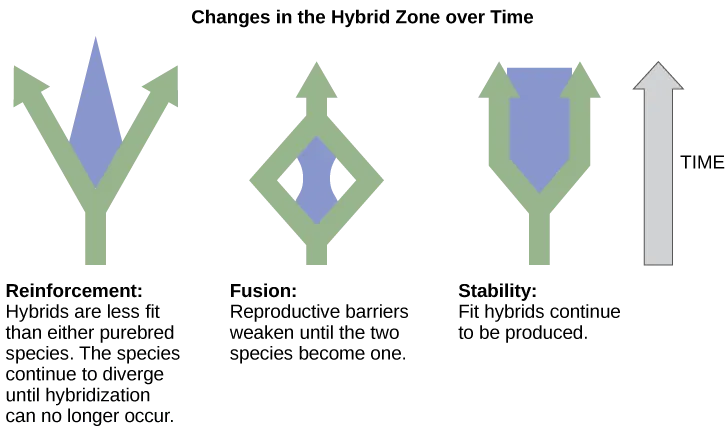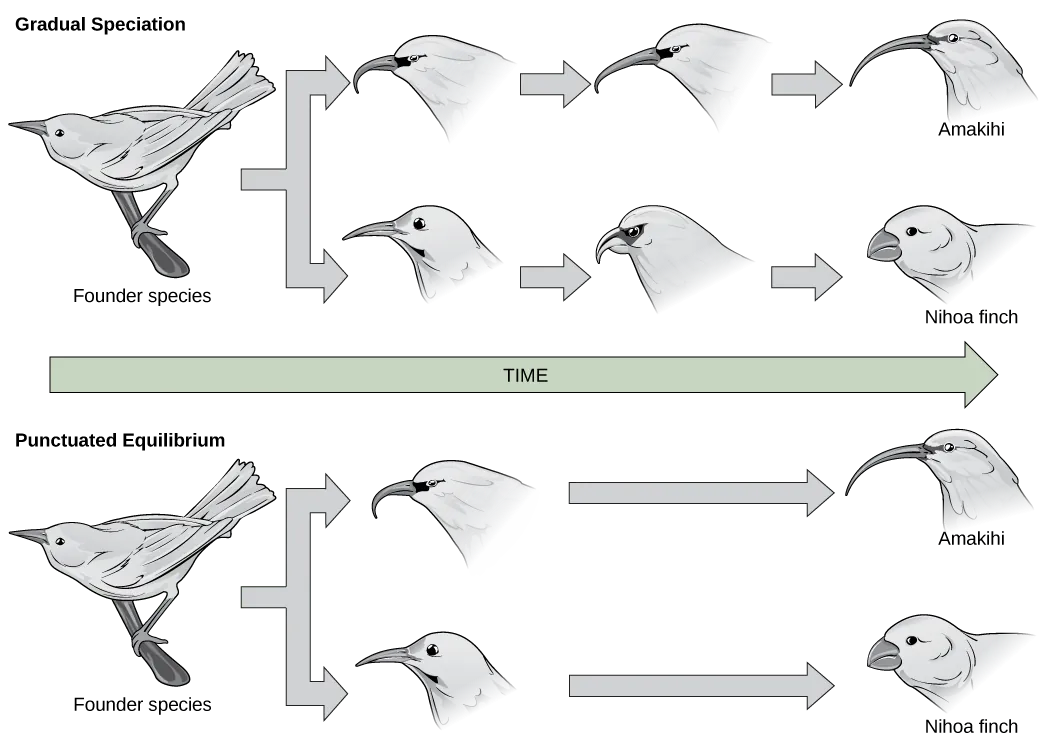18.3 Reconnection and Speciation Rates
Learning Outcomes
- Describe pathways of species evolution in hybrid zones
- Explain the two major theories on rates of speciation
Speciation occurs over a span of evolutionary time, so when a new species arises, there is a transition period during which the closely related species continue to interact.
Reconnection
After speciation, two species may recombine or even continue interacting indefinitely. Individual organisms will mate with any nearby individual with whom they are capable of breeding. We call an area where two closely related species continue to interact and reproduce, forming hybrids a hybrid zone. Over time, the hybrid zone may change depending on the fitness of the hybrids and the reproductive barriers (Figure 18.22). If the hybrids are less fit than the parents, speciation reinforcement occurs, and the species continue to diverge until they can no longer mate and produce viable offspring. If reproductive barriers weaken, fusion occurs and the two species become one. Barriers remain the same if hybrids are fit and reproductive: stability may occur and hybridization continues.

Varying Rates of Speciation
Scientists around the world study speciation, documenting observations both of living organisms and those found in the fossil record. As their ideas take shape and as research reveals new details about how life evolves, they develop models to help explain speciation rates. In terms of how quickly speciation occurs, we can observe two current patterns: gradual speciation model and punctuated equilibrium model.
In the gradual speciation model, species diverge gradually over time in small steps. In the punctuated equilibrium model, a new species undergoes changes quickly from the parent species, and then remains largely unchanged for long periods of time afterward (Figure 18.23). We call this early change model punctuated equilibrium, because it begins with a punctuated or periodic change and then remains in balance afterward. While punctuated equilibrium suggests a faster tempo, it does not necessarily exclude gradualism.

Link to Learning
Punctuated equilibrium model for speciation
Visit this website to continue the speciation story of the snails and increase your understanding of speciation and learn how speciation rates occur in the fossil record.
area where two closely related species continue to interact and reproduce, forming hybrids
continued speciation divergence between two related species due to low fitness of hybrids between them
method of entry by some enveloped viruses, where the viral envelope fuses with the plasma membrane of the host cell
model that shows how species diverge gradually over time in small steps
model for rapid speciation that can occur when an event causes a small portion of a population to be cut off from the rest of the population

